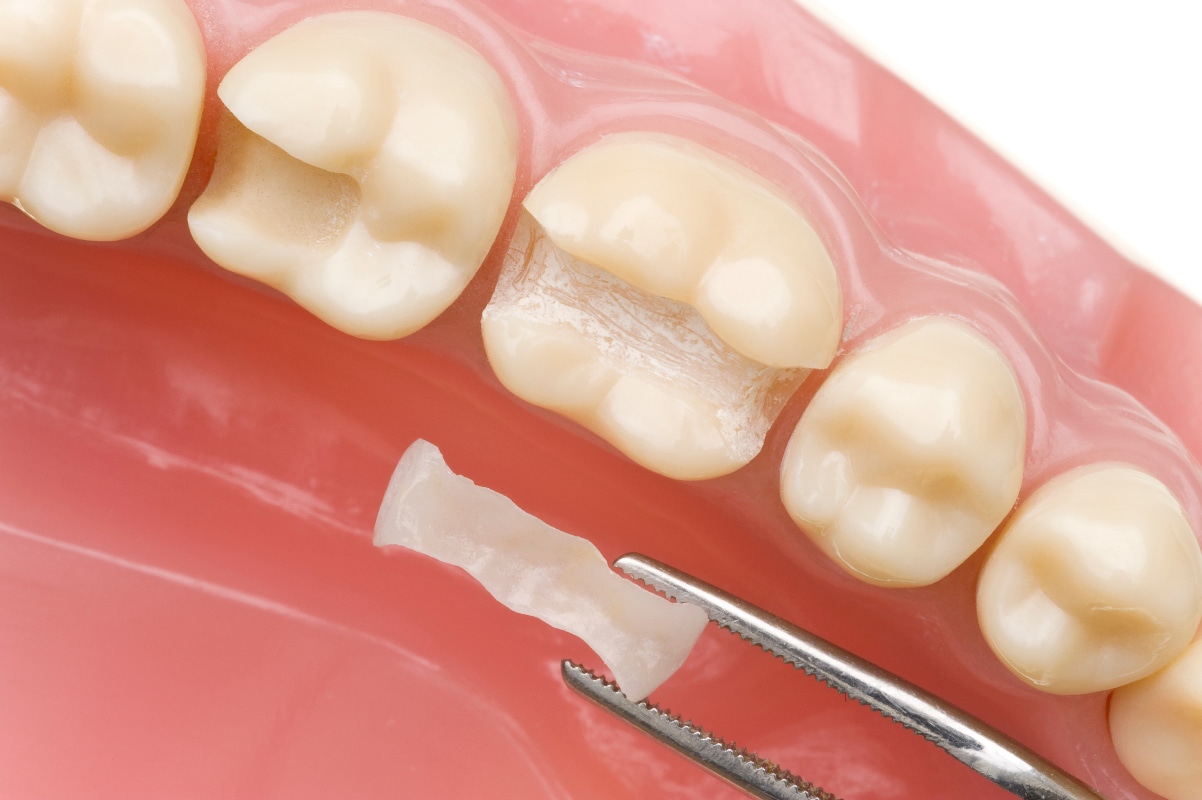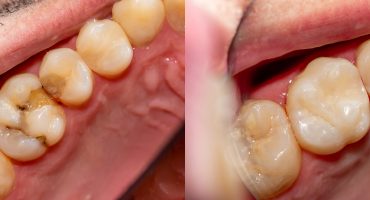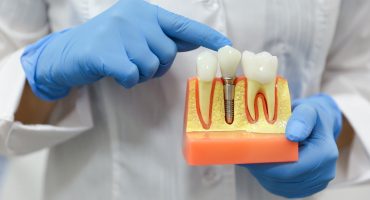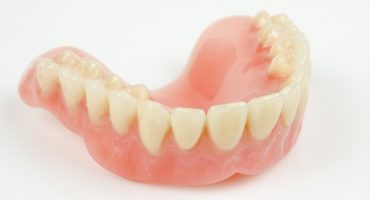Inlays are special fillings for the teeth. They are produced on the basis of an impression in a dental laboratory. The impression is made by the dentist.
Definition: Inlays
An inlay is considered in dentistry as a high-quality and long-lasting alternative to classic tooth filling. It is also suitable for very large areas that can not be treated with a regular filling. The inlay can be used whenever no crown is required as a denture.
The difference to the filling lies in the quality and durability. Conventional fillings are filled into the treated hole of the tooth and harden there. They only have a limited shelf life and shrink over the years. There is a risk of bacterial ingress. The new development of tooth decay is inevitable. An inlay is made individually in dentistry and used as a finished filling in the occlusal surface of the affected tooth. The cusps are preserved.
Inlays are differentiated according to the number of their surfaces:
- A single-surface inlay-purchasing surface only affects the tooth.
- A two-sided filling includes the area of an adjacent tooth in addition to the occlusal surface.
In a three-layer insert filling the occlusal surface and both tooth surfaces are affected by the neighboring tooth
Types and materials of inlays
Inlays are processed in different materials, which differ in durability and price. The most commonly used materials include
- gold,
- ceramics and
- plastic.
By far the longest durability is achieved with inlays of gold. The compatibility is very good. An intolerance to the material gold or an allergic reaction are very rare. Since pure gold is too soft as a material for a tooth inlay, it is alloyed with an additional material, usually platinum, silver or palladium.
The material ceramic is aesthetically very appealing and indistinguishable from the normal tooth substance. The biocompatible and color-stable material not only serves as a stand-alone inlay, but is also commonly used as a veneer for gold inlays to enhance aesthetics. The veneer leaves a narrow golden border.
Plastic Inlays also have a high aesthetic responsiveness. They are made of composite material and are priced slightly cheaper than a ceramic inlay. Plastic is therefore often chosen by patients as an alternative.
Areas of application of inlays
Inlays are suitable for the area of all posterior teeth. For the anterior region they are not suitable. They are used for small and medium sized lesions and offer an alternative to the existing standard care. If the remaining tooth substance is sufficient and no crown is required, inlays can be used.
Gold inlays are used because of the visible optics, especially in the area of the molars. They have a particularly high stability and are also suitable for patients with very high bite pressure.
Ceramic inlays and plastic inlays are preferably used in the visible posterior region. They are a sensible alternative for patients who, for health reasons, do not want to have amalgam as a filling or any differences in color to their own tooth color. Since ceramic is a more stable material than plastic, it is preferably used for larger lesions, which in total have a higher cost of materials.
Procedure / method with the use of inlays
Two dental sessions are required to use a gold inlay. At the first appointment, the caries are removed and the tooth is prepared by grinding for the use of the inlay. The dentist creates an impression to make the inlay for the laboratory. The pre-treated tooth undergoes a provisional restoration for its protection until the follow-up appointment. In the second session, the lab-made inlay is anchored in the tooth. Gold inlays are not glued, but attached to the tooth with a special dental cement.
The procedure for the use of a plastic inlay is comparable to the procedure for the gold. The insertion takes place by the adhesive method, in which the material is light-initiated or chemically attached.
Ceramic inlays are manufactured by means of Cerec (English: ceramic reconstruction). The peculiarity of the method is the ability to the produce and adjust the filling directly in the dentist's session, without having to take an impression. During the treatment, the tooth is scanned without contact with a computer-aided camera. The precisely measured dimensions are transferred to a grinding unit, which produces the inlay from a ceramic block within minutes.
Advantages and Disadvantages of Inlays
The advantages of inlays are primarily their very long shelf life compared to conventional fillings, as well as their aesthetically pleasing appearance. They are also biologically well tolerated. Often inlays can be used to treat large-scale dental defects that would no longer be suitable for direct filling and would otherwise require a crown. In this way, more own tooth substance can be obtained.
The disadvantages are the high additional costs that have to be provided by the patients themselves. Lack of dental hygiene on the part of the patient increases caries risk. A particularly endangered area here is the edge joint of the tooth, the point at which the inlay is inserted into the tooth. In rare cases, material intolerance may occur, which can be clarified before the treatment. In some cases, it may come in conjunction with the attachment of the inlay causing inflammation of the pulp. In ceramic inlays, the greater material hardness can in rare cases lead to damage to the adjacent tooth.
Cost of inlays
The costs for inlays depend on the material used and are based on the dental fee regulations. The exact expenses for an inlay are composed of various factors and include not only the material costs, but also the dental fees and the doctor’s fees.
The statutory health insurance companies reimburse the costs for composite single-layer fillings in the visible area of the anterior teeth of the upper and lower jaw. In the non-visible area of the lateral teeth, the health insurances only cover the costs of contract dental care. This includes patients who have no detectable material incompatibilities with the material amalgam.
All costs beyond this are to be paid by the patient himself. For this purpose, an additional cost agreement is concluded between the dentist and patient. In this, the insured person confirms in writing his consent to the additional costs, which exceed the cash benefit. These costs will be broken down before the start of treatment and communicated to the patient.
The contract dental costs are settled directly with the health insurance. The final bill for the patient merely lists the additional fees.




